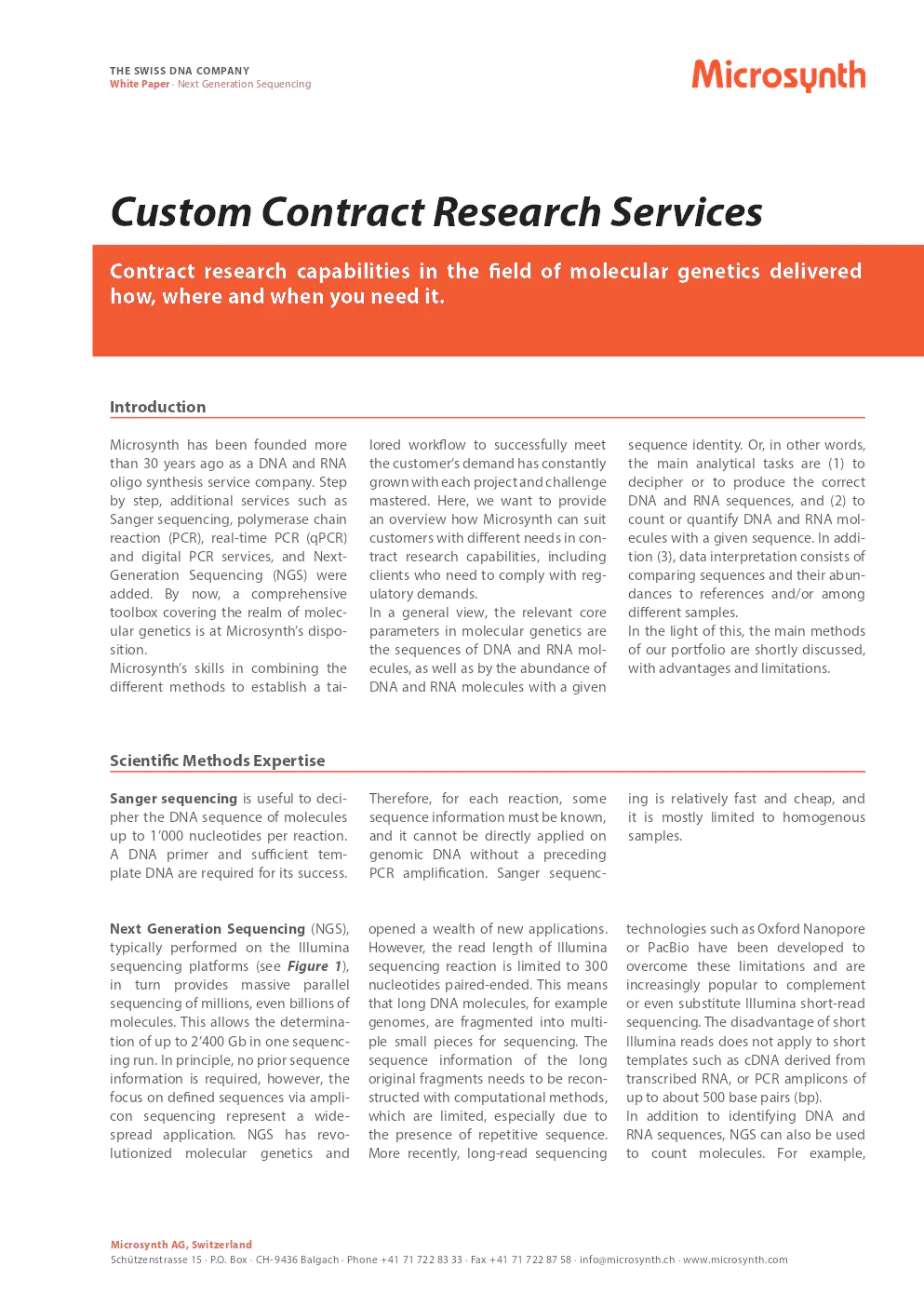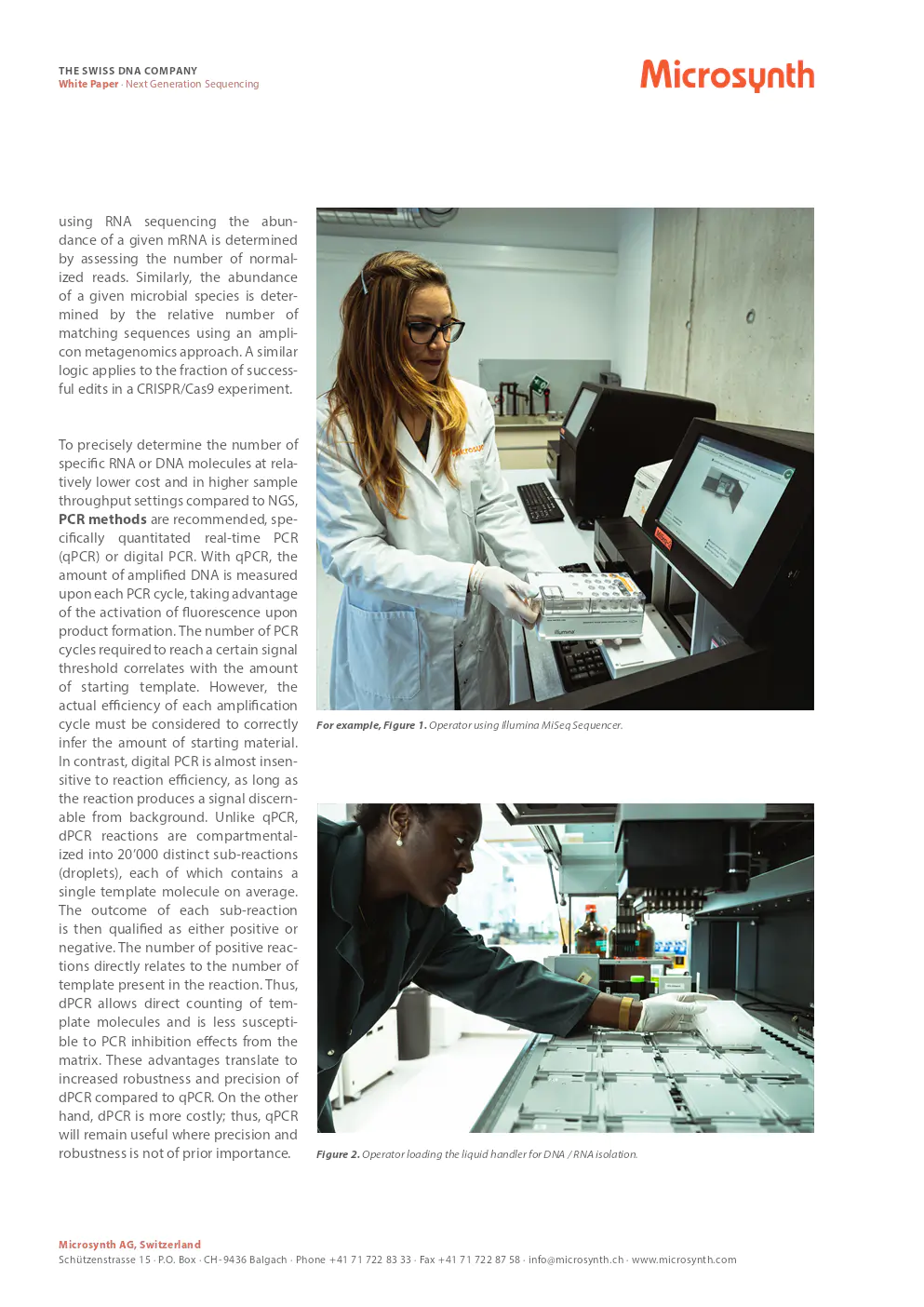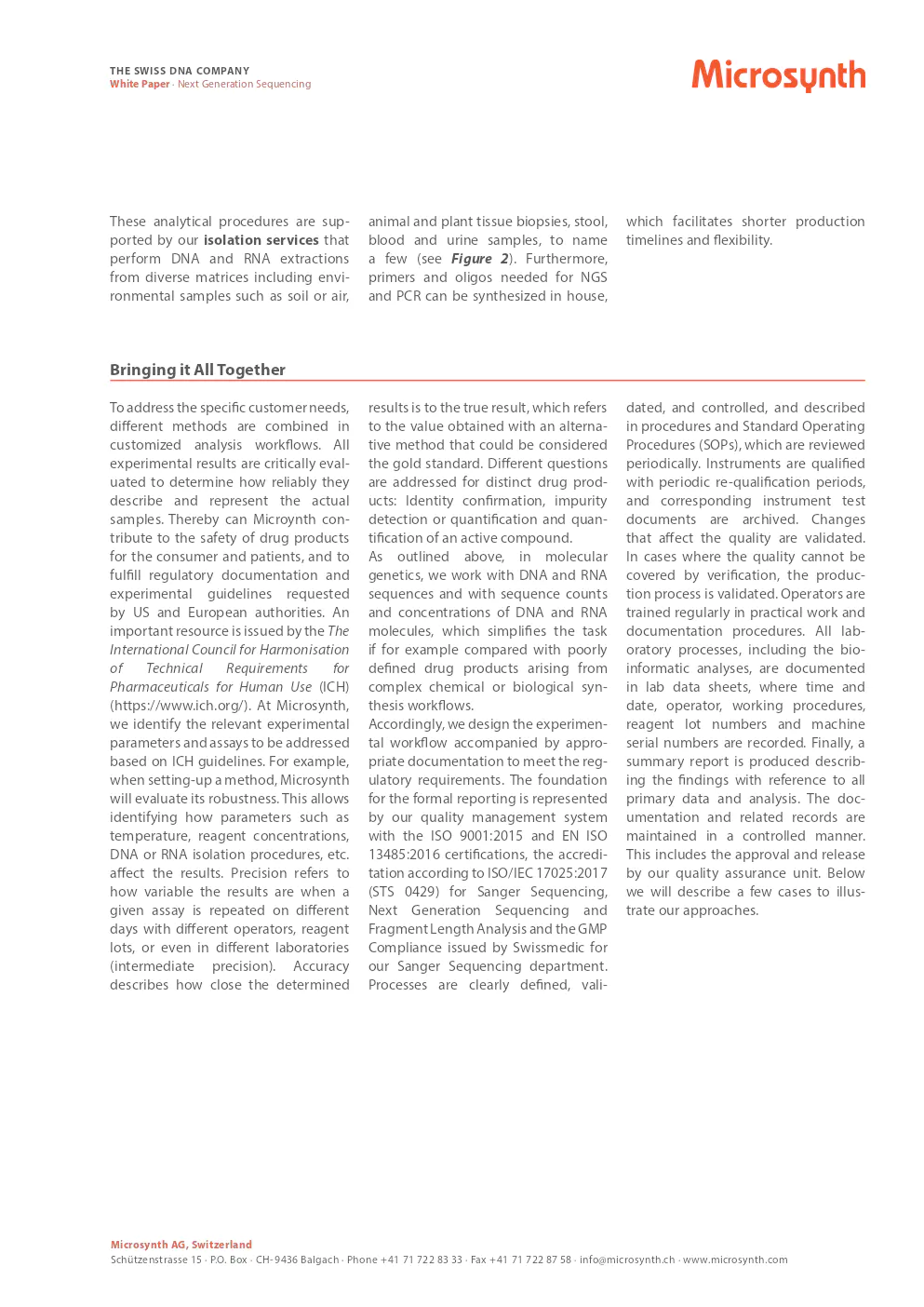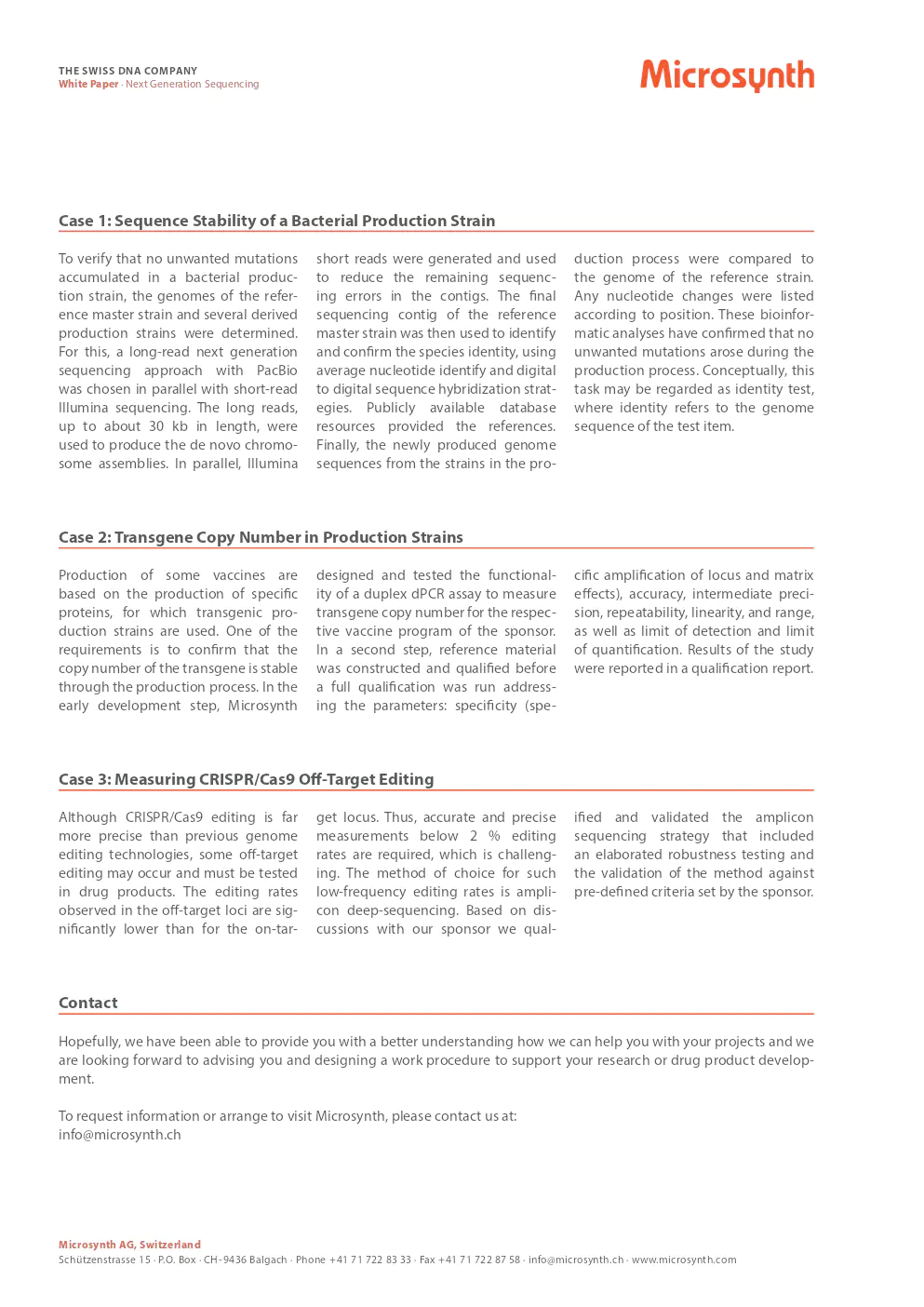livre blanc sur le séquençage de nouvelle génération par microsynth
document technique sur les services de recherche contractuelle en génétique moléculaire

Contenu du document
The Swiss DNA Company
White Paper · Next Generation Sequencing
Custom Contract Research Services
Contract research capabilities in the field of molecular genetics delivered how, where, and when you need it.
Introduction
Microsynth has been founded more than 30 years ago as a DNA and RNA oligo synthesis service company. Step by step, additional services such as Sanger sequencing, polymerase chain reaction (PCR), real-time PCR (qPCR), digital PCR services, and Next-Generation Sequencing (NGS) were added. By now, a comprehensive toolbox covering the realm of molecular genetics is at Microsynth’s disposition. Microsynth’s skills in combining the different methods to establish a tailored workflow to successfully meet the customer’s demand has constantly grown with each project and challenge mastered. Here, we want to provide an overview of how Microsynth can suit customers with different needs in contract research capabilities, including clients who need to comply with regulatory demands. In a general view, the relevant core parameters in molecular genetics are the sequences of DNA and RNA molecules, as well as by the abundance of DNA and RNA molecules with a given sequence identity. Or, in other words, the main analytical tasks are (1) to decipher or to produce the correct DNA and RNA sequences, and (2) to count or quantify DNA and RNA molecules with a given sequence. In addition (3), data interpretation consists of comparing sequences and their abundances to references and/or among different samples.
Scientific Methods Expertise
- Sanger sequencing is useful to decipher the DNA sequence of molecules up to 1,000 nucleotides per reaction. A DNA primer and sufficient template DNA are required for its success. Therefore, for each reaction, some sequence information must be known, and it cannot be directly applied on genomic DNA without a preceding PCR amplification. Sanger sequencing is relatively fast and cheap, and it is mostly limited to homogeneous samples.
- Next Generation Sequencing (NGS), typically performed on the Illumina sequencing platforms, provides massive parallel sequencing of millions, even billions of molecules. This allows the determination of up to 2,400 Gb in one sequencing run. In principle, no prior sequence information is required, however, the focus on defined sequences via amplicon sequencing represent a widespread application. NGS has revolutionized molecular genetics and opened a wealth of new applications. However, the read length of Illumina sequencing reaction is limited to 300 nucleotides paired-ended. More recently, long-read sequencing technologies such as Oxford Nanopore or PacBio have been developed to overcome these limitations and are increasingly popular to complement or even substitute Illumina short-read sequencing. In addition to identifying DNA and RNA sequences, NGS can also be used to count molecules.
- PCR methods are recommended to precisely determine the number of specific RNA or DNA molecules at relatively lower cost and in higher sample throughput settings compared to NGS. With qPCR, the amount of amplified DNA is measured upon each PCR cycle, taking advantage of the activation of fluorescence upon product formation. Digital PCR (dPCR) allows direct counting of template molecules and is less susceptible to PCR inhibition effects from the matrix, providing increased robustness and precision compared to qPCR.
Bringing it All Together
To address the specific customer needs, different methods are combined in customized analysis workflows. All experimental results are critically evaluated to determine how reliably they describe and represent the actual samples. Thereby, Microsynth contributes to the safety of drug products for the consumer and patients, and fulfills regulatory documentation and guidelines requested by US and European authorities.
Case Studies
- Case 1: Sequence Stability of a Bacterial Production Strain - To verify that no unwanted mutations accumulated in a bacterial production strain, the genomes of the reference master strain and several derived strains were determined using a long-read next generation sequencing approach with PacBio and short-read Illumina sequencing.
- Case 2: Transgene Copy Number in Production Strains - Microsynth designed and tested the functionality of a duplex dPCR assay to measure transgene copy number for a respective vaccine program, ensuring stability through the production process.
- Case 3: Measuring CRISPR/Cas9 Off-Target Editing - Although CRISPR/Cas9 is more precise than previous technologies, some off-target editing may occur. Microsynth qualified an amplicon sequencing strategy to accurately measure low-frequency editing rates, ensuring compliance with pre-defined criteria.
Contact
To request information or arrange to visit Microsynth, please contact us at: info@microsynth.ch



